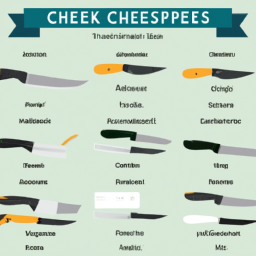Long-tail keywords, those comprising three or more words, offer content creators significant opportunities to reach audiences searching for very specific topics. Using long-tail keywords strategically throughout content in titles, headings, body text and other elements helps boost rankings for these searches and convert more targeted traffic. This post will explore how creators can optimally utilize long-tail keywords.
Understand the Value of Long-Tail Keyword Research
When conducting keyword research, it’s easy to obsess over high-volume, short keywords like “wordpress tutorial” or “coffee maker reviews.” However, the long tail represents a massive volume of potential traffic. While individual searches for long-tail keywords are less frequent, their large numbers mean there is real opportunity. Research tools like the Yoast SEO plugin keyword explorer allow you to evaluate search volume, competition and potential CTR for keywords of any length. Identifying those with moderate volume but low competition is a smarter use of time than chasing highly competitive head terms.
Incorporate Primary and Secondary Long-Tail Keywords
A good target is to select a 3-5 word primary long-tail keyword to feature prominently in the page or post title, headings, and first paragraph. Then identify 2-3 related secondary keywords to work into your content as well. For example, a post aimed at “coffee brewing technique for French press” may also incorporate “French press coffee recipes” and “proper French press water temperature” to expand its reach. Strategically optimizing for more than just one keyword improves the chances of ranking.
Structure Content Around Headings for Relevant Long-Tail Keywords
Using heading tags like <h2> and <h3> with your chosen secondary keywords breaks up the text for easier scanning while signaling relevance to search engines. For example:
Utilize Long-Tail Keywords in Your Content to Capture More Targeted Traffic
Master Coffee Brewing Technique for French Press
Determine the Proper Water Temperature for French Press Coffee
3 Delicious French Press Coffee Recipes to Try
This structure clearly separates and reinforces the target keywords. Heading text should directly relate to the keyword rather than simply “Heading 1,” “Heading 2” etc.
Optimize Images for Long-Tail Keywords
Images help break up content and enhance readability for visitors. They also provide another opportunity to optimize. For images related to a target keyword like “cheese knife selection guide,” the file name, alt text and surrounding text should contain that keyword phrase. For example:
alt text: Infographic showing the top 10 types of cheese knives to consider for a cheese knife selection guide”
Incorporate Keywords Naturally Throughout Content
In addition to the above structural elements, work target keywords naturally into paragraph text when possible. Rather than forced stuffing, aim for a balance of readability and optimization. For a piece about “woodworking technique for Japanese wood joint,” examples may include:
“The Japanese wood joint technique known as the mitered dovetail…”
“This traditional woodworking method requires precision to cut the interlocking joints…”
“With practice, anyone can master the mitered dovetail wood joint.”
Utilize Synonyms, Related Terms and Keyword variations
Using strict variations of keywords helps readers scanning for solutions while maintaining fresh writing. When discussing brewing technique for French press coffee, include related terms like:
- Immersion brewing
- Plunger coffee
- Cafetiere
- Press pot
This casts a wider optimization net without sounding repetitive. The Yoast SEO plugin’s keyword variation suggestions come in handy here.
Monitor and Review Performance of Targeted Long-Tail Keywords
Once optimized long-tail content is published, it’s crucial to continuously track its performance using tools like search console and analytics. By analyzing the data, marketers can identify which keywords are driving traffic and engagement, allowing them to refine their techniques accordingly. Over time, this iterative process enables marketers to focus on better-performing terms and pivot their efforts towards new long-tail opportunities as needed.
Consistent refinement is key to maintaining relevance in the ever-evolving landscape of search algorithms and user intents. Regular monitoring and adjustment ensure that marketing efforts remain effective and aligned with current trends and preferences, ultimately maximizing the impact of long-tail keyword strategies.




